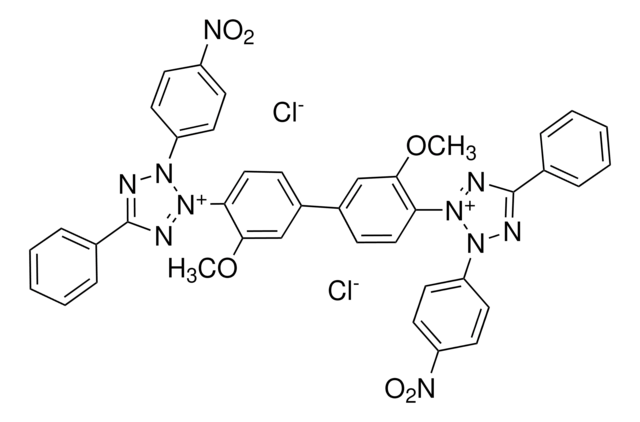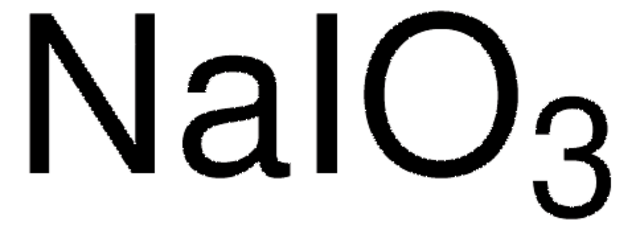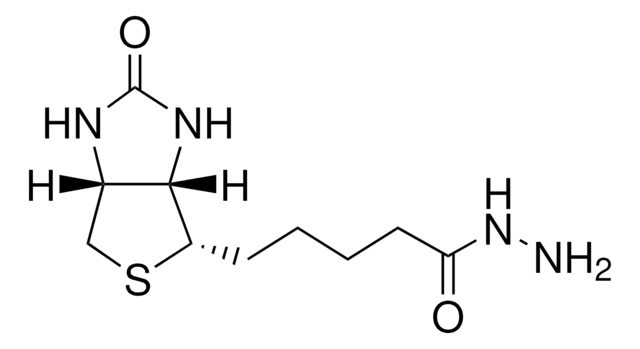S1878
Sodium (meta)periodate
≥99.0%
Synonym(s):
Sodium periodate
About This Item
Recommended Products
grade
for analytical purposes
Assay
≥99.0%
form
powder
reaction suitability
reagent type: oxidant
pH
3.5-5.5 (25 °C, 107 g/L)
solubility
H2O: 50 mg/mL
SMILES string
[Na+].[O-]I(=O)(=O)=O
InChI
1S/HIO4.Na/c2-1(3,4)5;/h(H,2,3,4,5);/q;+1/p-1
InChI key
JQWHASGSAFIOCM-UHFFFAOYSA-M
Looking for similar products? Visit Product Comparison Guide
General description
Application
- 1,2-diols to aldehydes or ketones via oxidative cleavage. Sulfides to sulfoxides in the presence of phase transfer catalysts.
- Diaryl, dialkyl, and aryl alkyl selenides to the respective selenoxides.
- Phenols and their derivatives to corresponding quinones.
- Acylphosphoranes to α,β-dicarbonyl compounds.
It can also be used in the:
- Selective alkene epoxidation and alkane hydroxylation,·
- Oxidation of carbohydrates.
- Iodination of aromatic compounds.
Features and Benefits
Signal Word
Danger
Hazard Statements
Precautionary Statements
Hazard Classifications
Aquatic Acute 1 - Aquatic Chronic 1 - Eye Dam. 1 - Ox. Sol. 1 - Skin Corr. 1C - STOT RE 1
Target Organs
Thyroid
Storage Class Code
5.1A - Strongly oxidizing hazardous materials
WGK
WGK 3
Flash Point(F)
Not applicable
Flash Point(C)
Not applicable
Choose from one of the most recent versions:
Already Own This Product?
Find documentation for the products that you have recently purchased in the Document Library.
Customers Also Viewed
Our team of scientists has experience in all areas of research including Life Science, Material Science, Chemical Synthesis, Chromatography, Analytical and many others.
Contact Technical Service












